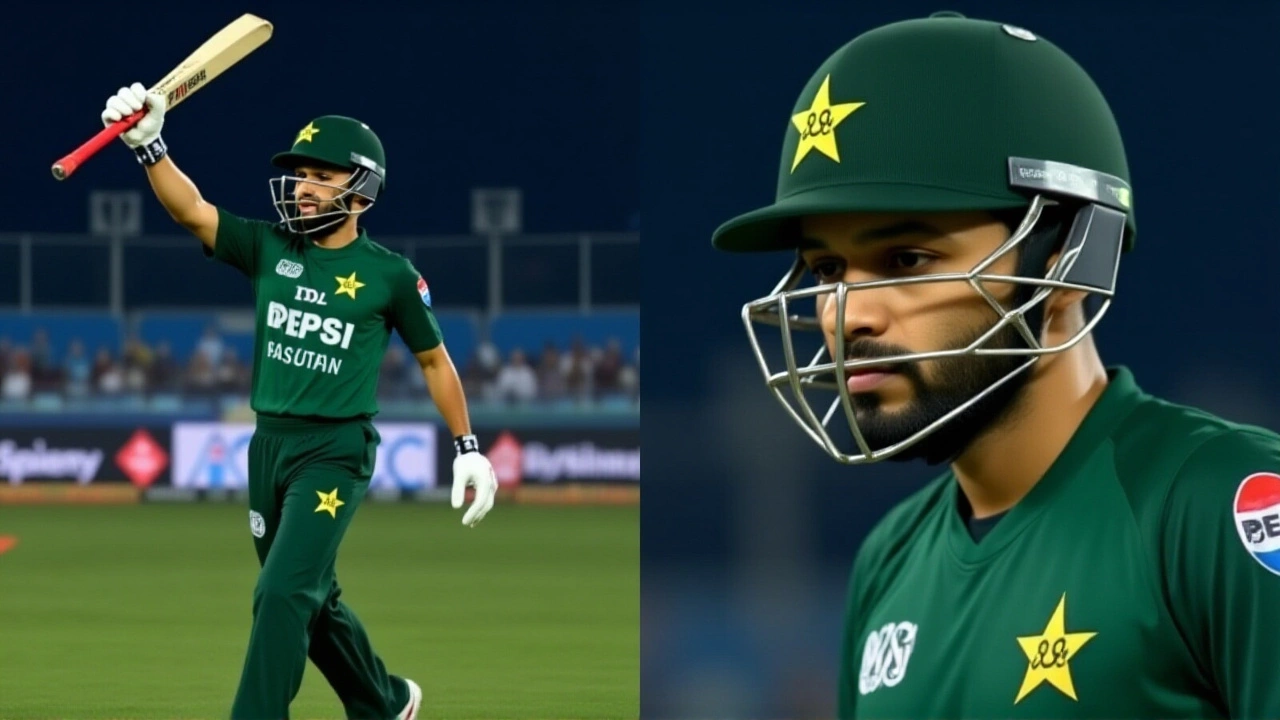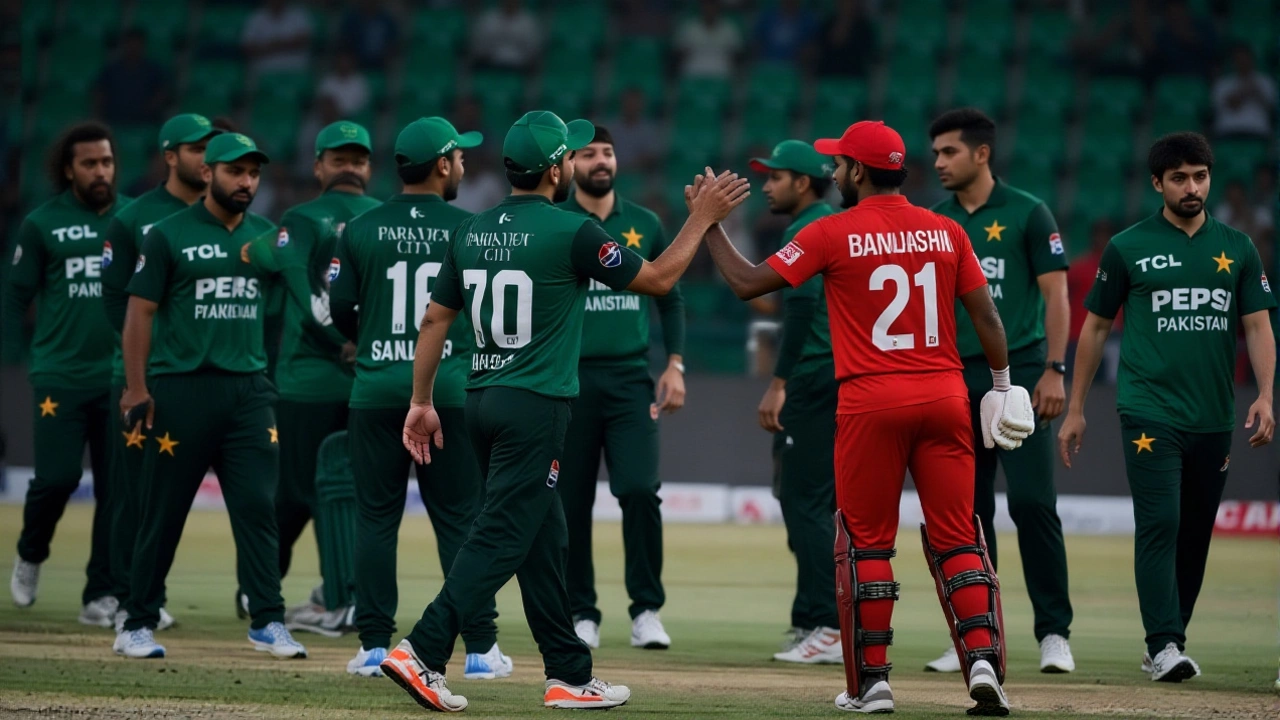When Pakistan bowled out Bangladesh for 124 in the final over of their Super 4 showdown at the Dubai International Cricket Stadium on Thursday, September 25, 2025, the crowd didn’t just cheer—they exhaled. After weeks of high-scoring games and nerve-jangling chases, this was a match decided by grit, not glory. Pakistan’s 11-run win didn’t just send them to the final—it exposed cracks in Bangladesh’s chase, and confirmed what experts had quietly suspected: the Dubai International Cricket Stadium pitch had changed its character. Again.
The Pitch That Changed the Game
For two years, this venue had been a graveyard for bowlers. The turf, worn thin from IPL and T20 World Cup matches, offered little grip, slower bounce, and predictable turn. But last week, ground staff laid fresh grass. Not much—just enough. And that small change made all the difference.
"Based on the last two years, we’ve seen that Dubai has been avoiding grass because of the extra usage," said a pitch analyst quoted in The Indian Express. "Now, looking at the ground last two weeks, they have got a grass cover at the moment. So I believe that the pitches will not behave as they have for the last two years. The pitches should have better carry to the keeper and should have better pace onto the bat."
That’s exactly what happened. The ball jumped off the surface. Batters who relied on late swing or slow turn were left guessing. Pakistan’s bowlers, especially Haris Rauf, exploited it ruthlessly. His 3 for 33 wasn’t just good—it was timely. The middle overs, usually a batter’s playground, turned into a minefield. Bangladesh’s top order, which had thrived in powerplays all tournament, collapsed under pressure.
Who Won the Battle of the Bowlers?
It wasn’t just Rauf. Shaheen Shah Afridi struck early, removing the dangerous Litton Das with a searing inswinger that clipped the top of off-stump. The crowd gasped. It was the kind of delivery that shifts momentum in a single ball.
Bangladesh’s Mustafizur Rahman, who entered the match with 8 wickets in 5 innings at an average of 17.25 and an economy rate of 7.26, delivered again. He dismissed Salman Ali Agha with a perfectly disguised slower ball—his 11th wicket of the tournament. But even he couldn’t stop the collapse. The rest of Bangladesh’s lineup, starved of boundaries during the middle overs, couldn’t recover.
"The bowlers who fail to maintain consistency have been punished," noted The Times of Dubai. "But Pakistan? They didn’t fail. They stayed tight. They trusted their lines. And when the pressure built, they didn’t blink."

The Weight of History
This wasn’t just another match. It was a reckoning.
At the Dubai International Cricket Stadium, Pakistan had played 36 T20Is—19 wins, 16 losses. Bangladesh? Just six matches here: three wins, three losses. The numbers didn’t favor Bangladesh. But the narrative did. They’d beaten Sri Lanka. They’d nearly toppled India. They believed they belonged.
Yet history had another script. Pakistan had lost their first Super 4 game to India. Bangladesh had lost theirs too. This was a knockout. No room for error. No second chances. And when the 20th over began with Bangladesh needing 22 off 12 balls, the tension was thick enough to cut.
It wasn’t the big sixes that did them in. It was the dot balls. The tight yorkers. The run-outs that came from desperate dives. Pakistan’s fielding, often overlooked, was razor-sharp. Three run-outs in the final 5 overs. One of them came from a direct hit from Mohammad Rizwan—a man known more for his gloves than his arm. But on this night, he had the instincts of a veteran.
What Comes Next? India Awaits
On Sunday, September 28, 2025, the same ground will host the final. And this time, it won’t be a battle for survival. It’ll be a coronation—or a reckoning.
India, led by Suryakumar Yadav, have won every match they’ve played in this tournament. Six out of six. No losses. No close calls. Just dominance. Their 212 for 2 against Afghanistan last year still stands as the highest T20I total at this venue. They’ve adapted to every pitch. Every condition. Every pressure.
Now, they face Pakistan. Again. On a Sunday. In Dubai. The script feels familiar. The 2018 final. The 2022 final. Both ended with India lifting the trophy. But this time, Pakistan aren’t underdogs. They’ve fought back. They’ve survived. And they’ve found their rhythm.

Weather, Records, and the Final Countdown
There’s no rain threat. NDTV Sports confirmed, citing AccuWeather, that the forecast for Sunday remains clear. No match in this tournament has been washed out. That’s rare. And it means the final will go ahead—no delays, no drama.
India will be chasing their ninth Asia Cup title. Pakistan? They haven’t won it since 2012. The last time they reached a final here? 2022. They lost. This time, they’ve earned their shot.
The Dubai International Cricket Stadium has hosted IPL matches in 2014, 2020, and 2021. It was a venue for the 2021 T20 World Cup. It’s seen legends rise and fall. Now, it’s about to witness another chapter.
Frequently Asked Questions
Why did the Dubai pitch behave differently in this match compared to earlier games?
Ground staff laid a fresh grass cover in the two weeks leading up to the match, a departure from the bare, worn-out surfaces seen in the previous two years. This improved carry and pace, making the ball bounce more consistently and reducing the grip for spinners. Experts noted this change would favor teams chasing, but Pakistan’s disciplined bowling exploited the new conditions better than Bangladesh’s inconsistent batting.
How did Haris Rauf’s performance impact Pakistan’s chances?
Haris Rauf’s 3 for 33 in four overs was the turning point. He dismissed Bangladesh’s middle-order anchors—Shakib Al Hasan and Najmul Hossain Shanto—in the 13th and 16th overs, breaking the backbone of their chase. His ability to bowl yorkers and slower balls under pressure, combined with the new pitch’s pace, made him nearly unplayable in the death overs. His figures were the best by a Pakistani bowler in this tournament.
What’s the significance of Pakistan facing India in the final at the same venue?
This marks the third consecutive Asia Cup final between India and Pakistan to be held in Dubai. The rivalry is intense, and India has won all previous finals here—2018 and 2022. But Pakistan’s path to this final was tougher: they lost to India early, then beat Sri Lanka and Bangladesh under pressure. This time, they’re not just challengers—they’re battle-tested.
Why did Bangladesh struggle despite Mustafizur Rahman’s strong record?
Mustafizur Rahman entered the match with 8 wickets in 5 innings and an economy rate of 7.26, but Bangladesh’s batting lacked depth. Their top order failed to capitalize on the powerplay, and their middle order couldn’t adjust to the new pitch’s pace. While Mustafizur took one key wicket, the rest of the bowling attack couldn’t match Pakistan’s discipline. The team relied too heavily on him, and when he was neutralized, they had no Plan B.
Is this the first time a grass cover changed the outcome of a match in Dubai?
No. In the 2021 T20 World Cup, a similar grass cover at the same venue helped Australia’s pace attack dismantle England. But this was the first time in the Asia Cup that such a change directly influenced a knockout match. Ground staff had intentionally reduced grass since 2023 to slow the game down. Reintroducing it reversed the trend—and changed the tournament’s trajectory.
What does this result mean for Pakistan’s chances against India in the final?
Pakistan’s win proves they can win under pressure, even when their batting falters. Their bowling unit—Rauf, Afridi, and Naseem Shah—has now taken 27 wickets in the last three matches. Against India’s explosive top order, they’ll need to replicate that discipline. But with the pitch favoring pace and bounce, and India’s own bowlers struggling in middle overs, Pakistan’s best chance lies in early breakthroughs and containing the death overs.





